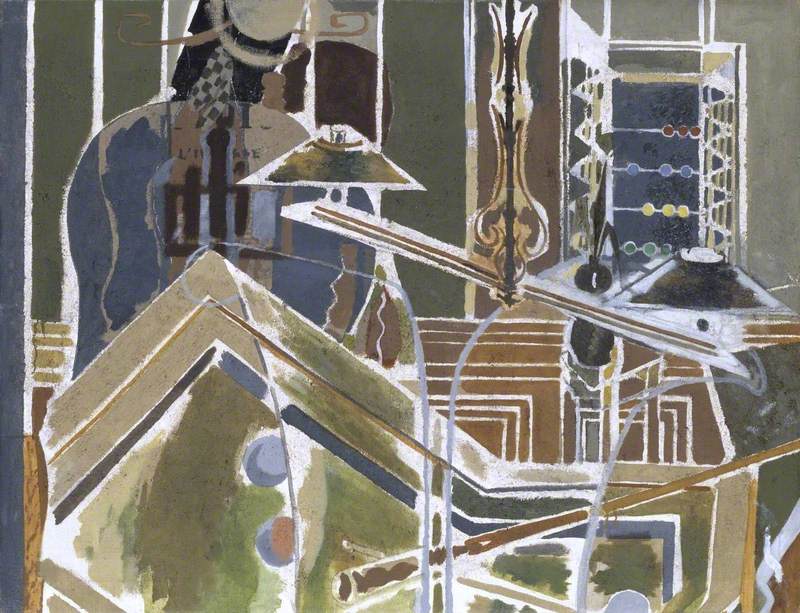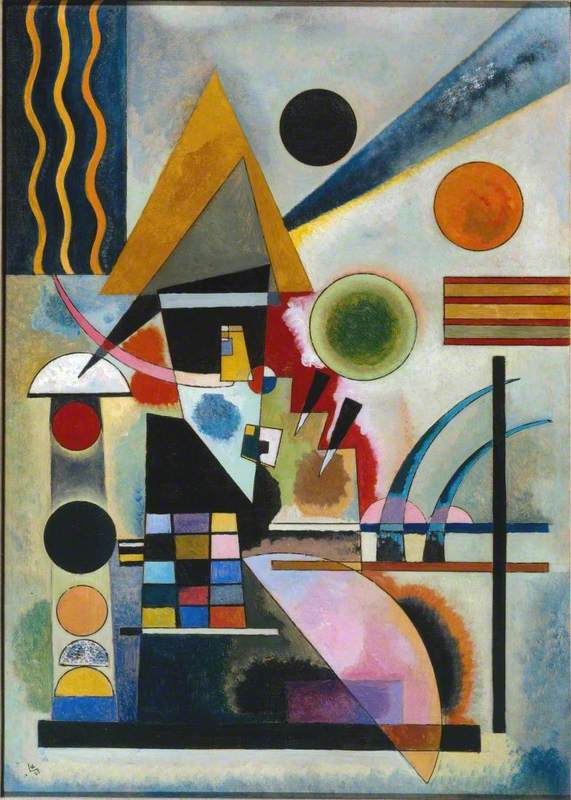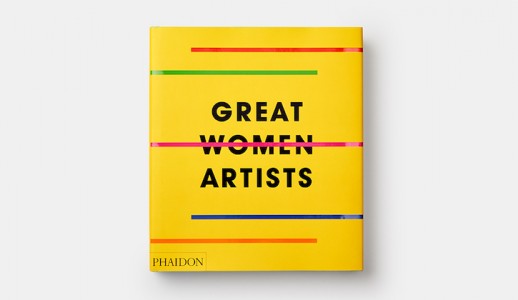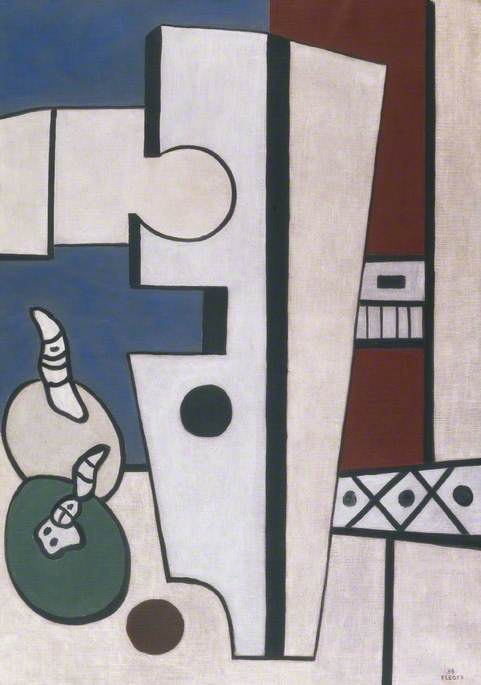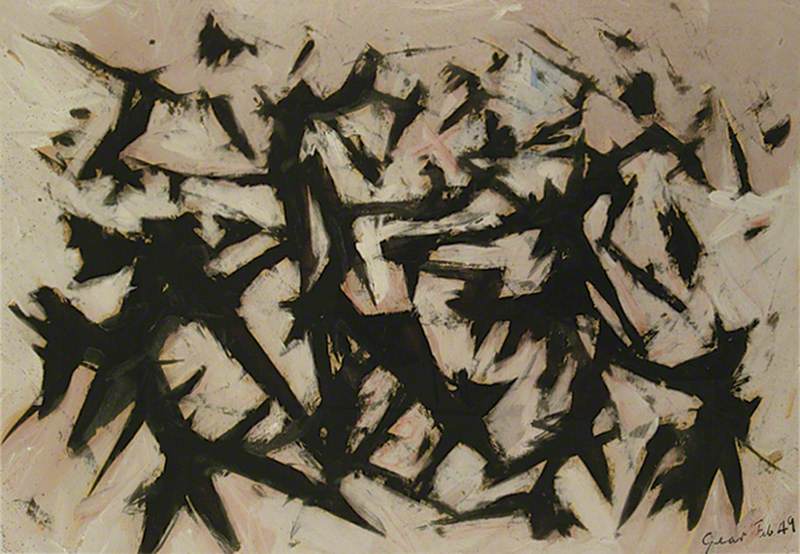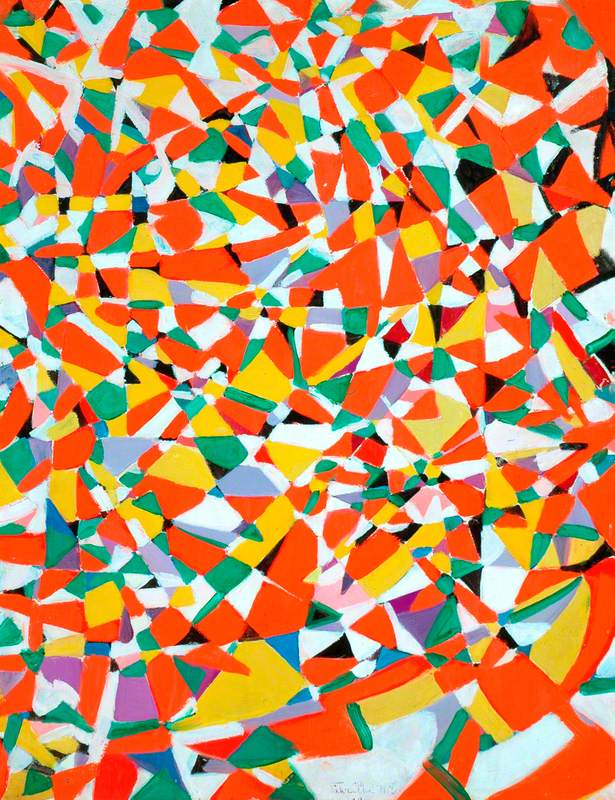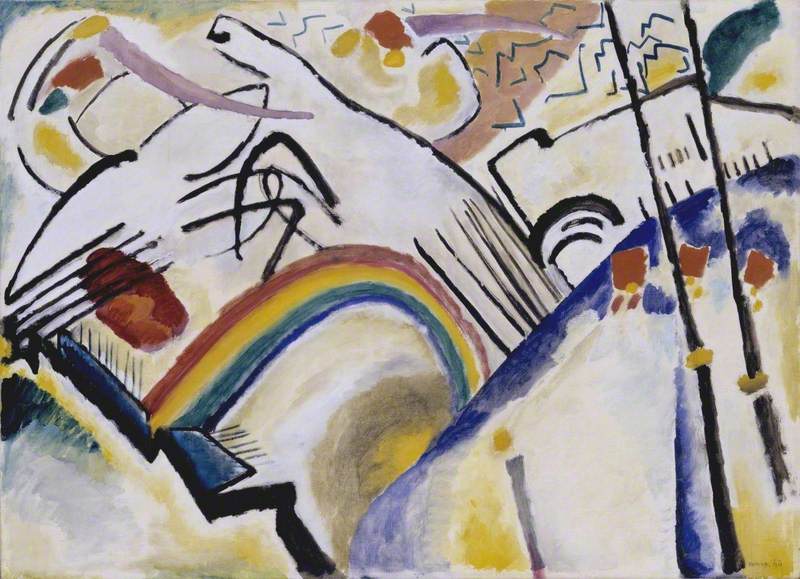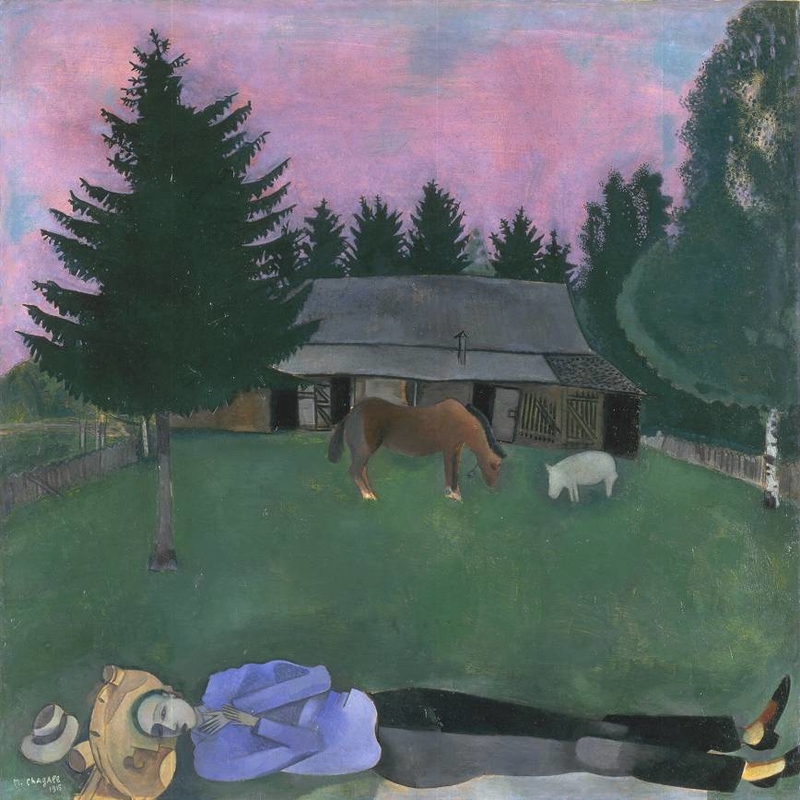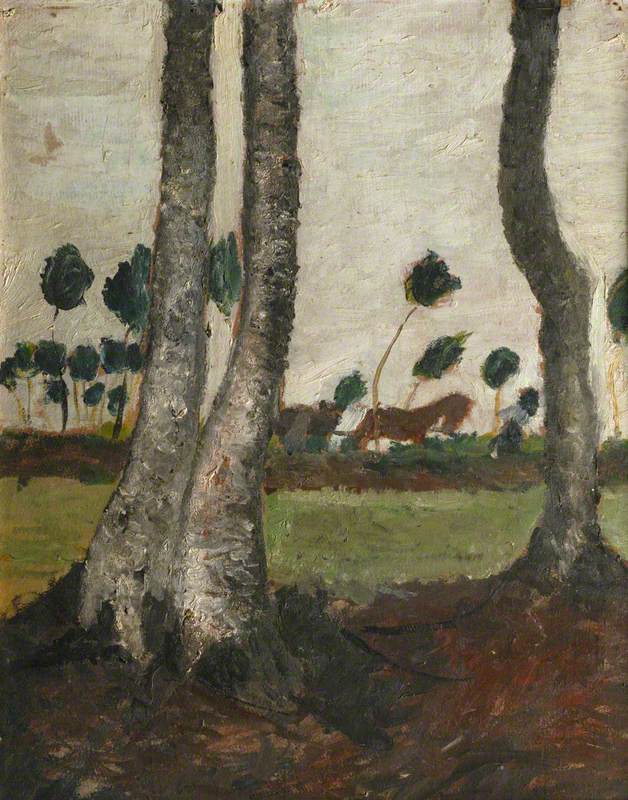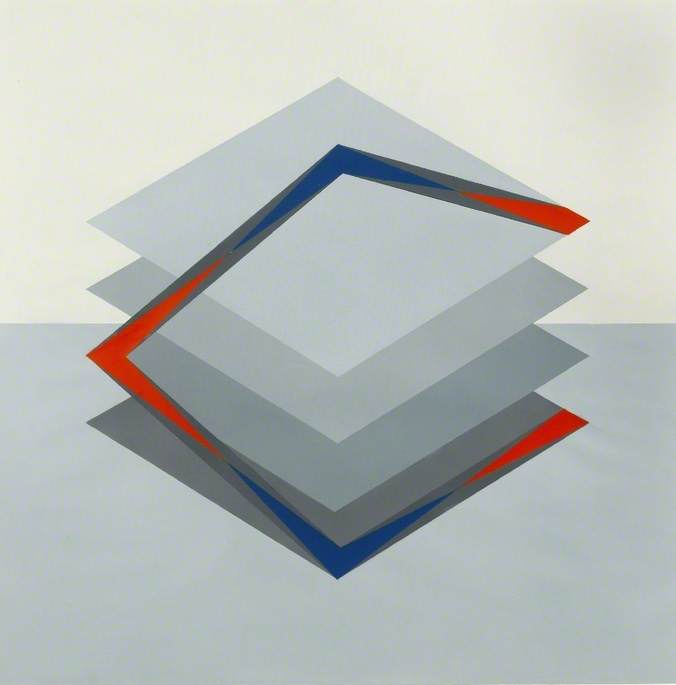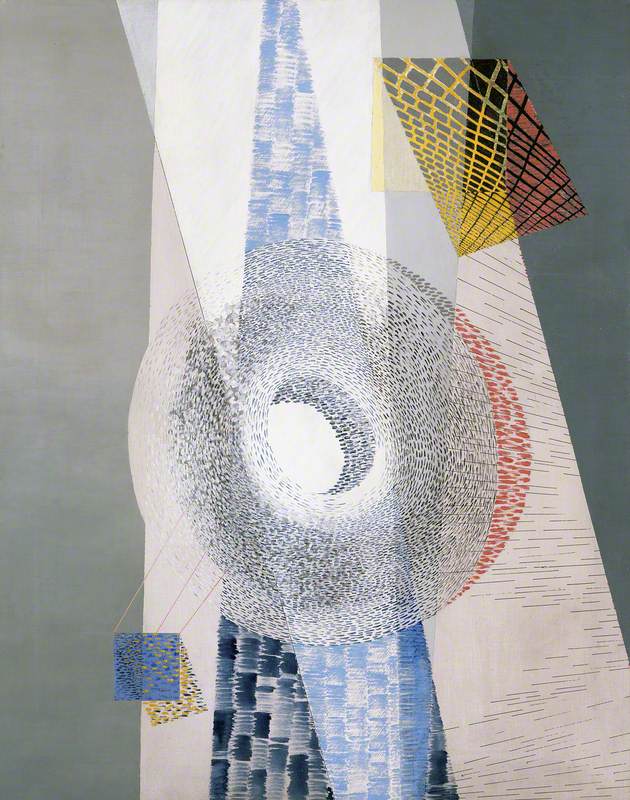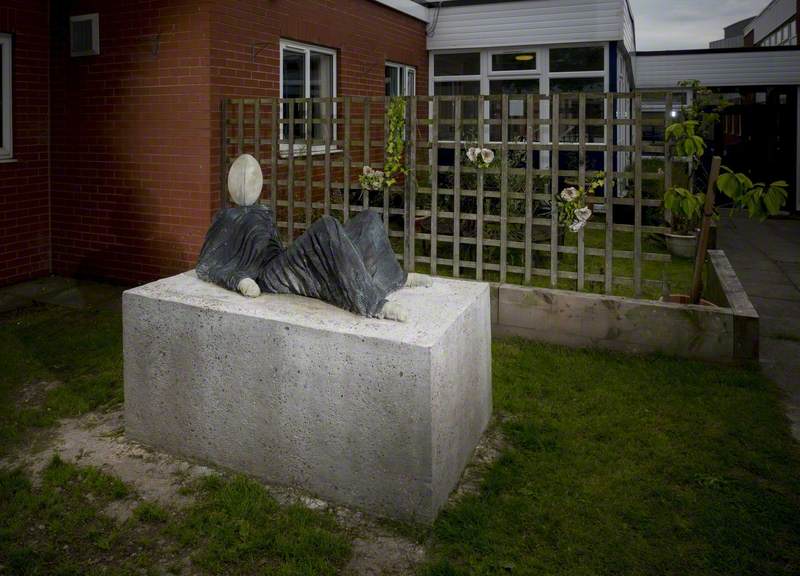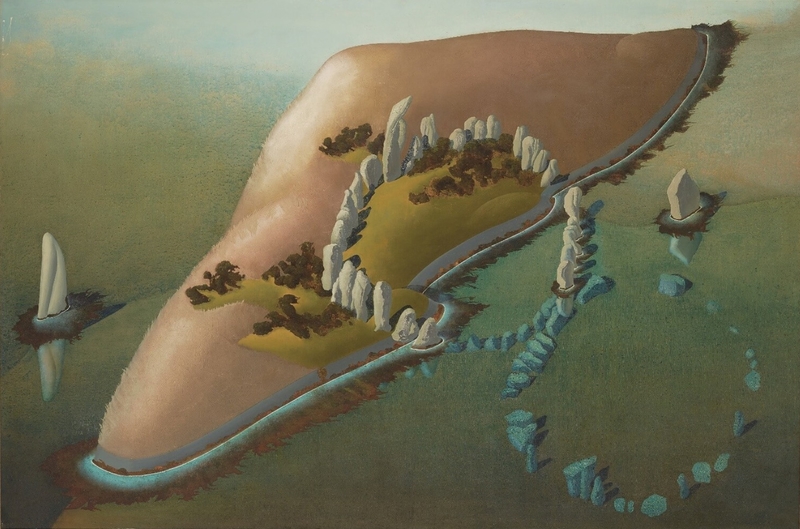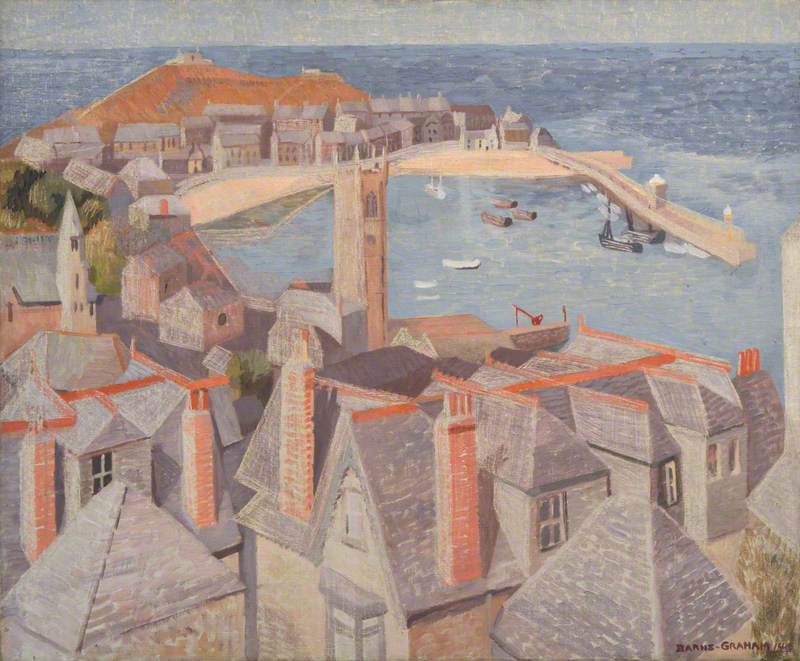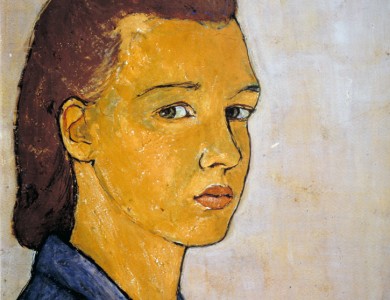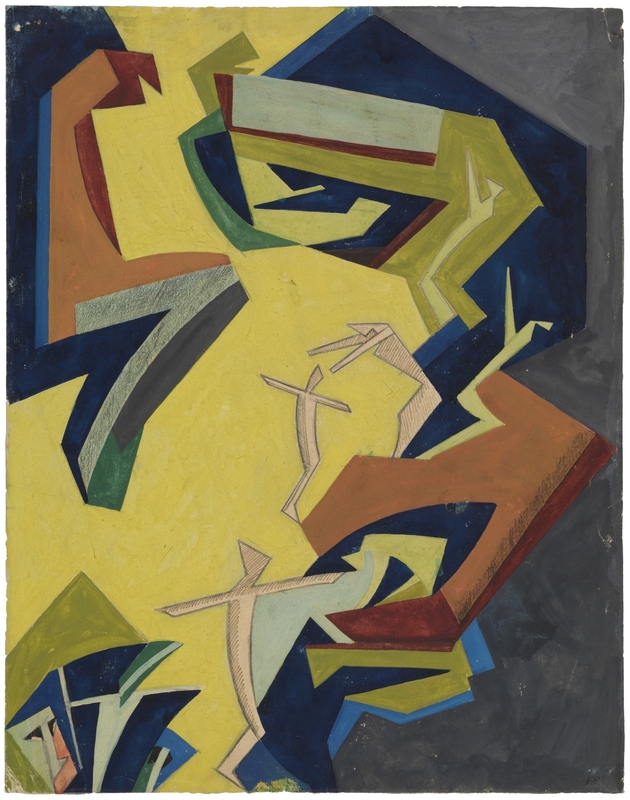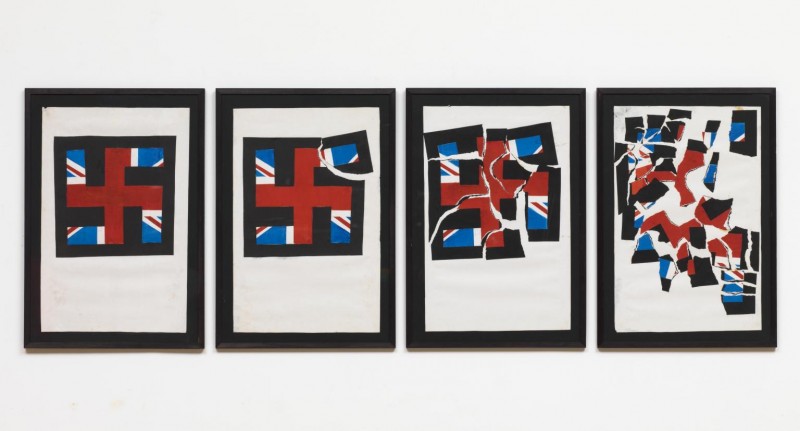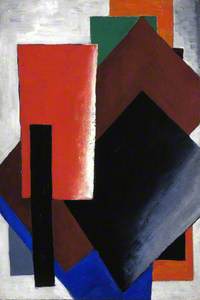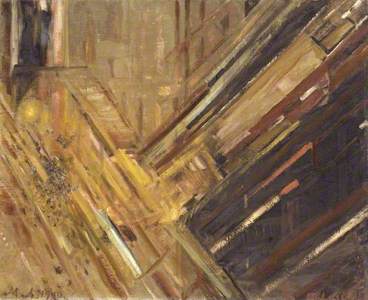Travel is a constant source of inspiration, and every trip introduces you to new people, architecture, food, and works of art. While spending an afternoon at the Scottish National Gallery of Modern Art in Edinburgh, I came across Painterly Architectonic, a work by Lyubov Popova (1889–1924).
She is frequently called one of the 'amazons' of Russian avant-garde, together with other women artists of the first quarter of the twentieth century, including Alexandra Exter (1882–1949), Natalia Goncharova (1881–1962), Olga Rozanova (1886–1918), Varvara Stepanova (1894–1958), and Nadezhda Udaltsova (1885–1961), who all made significant contributions to the development of modern art. Seeing this painting on display next to works by masters of international abstraction, including Piet Mondrian (1872–1944) and Pablo Picasso (1881–1973), made me think about Popova’s place in the context of European early twentieth-century art, and how the art movements of the period inspired her work.
Painterly Architectonic is an example of Popova’s mature period, where she presents her unique personal style, evolved after years of constant experimentation. Her short but bright career flourished during one of the most exciting periods in modern history – the early twentieth century and the Russian Revolution – when people were searching for new directions in politics, technology, and art.
Popova was born in 1889 in Ivanovskoye, near Moscow, into the family of an affluent textile merchant and active patron of the arts. From an early age she studied art, and took classes at the School of Painting and Drawing in Moscow run by Konstantin Yuon (1875–1958), who was influential in Popova’s interest in Impressionistic rendering of light and colour evident in her first works. From her early twenties, Popova traveled extensively around Russia and Europe, exploring old and new artistic movements and monuments.
One of her earliest inspirations came from traditional Russian art in the form of costumes and icon painting (especially the Novgorod School of Icon Painting c.1100–1500). Visiting the churches and monasteries of Northern Russia and Kiev, Ukraine’s capital, Popova was impressed by the bright colours of icons and frescoes applied on large, flat surfaces. This interest was strengthened by her visits to Italy, where she encountered works by Giotto and other Renaissance masters. Similar to Russian icon painters, Giotto used vivid colours, gold, and outlines, aiming to create a sense of perspective in a primitive manner.
Popova’s visits to Italy and France also introduced her to new developments in Modern art, such as Post-Impressionism, Futurism, and Cubism. Her works from this period reveal the integration of form and space, depicting familiar objects with the help of curved and rectilinear planes, similar to Fernand Leger (1881–1955) and Umberto Boccioni (1882–1916). In her works, the outlines change their supporting role, becoming the main feature of the composition. Under the influence of Pablo Picasso and Georges Braque (1882–1963), Popova became interested in dissecting an object (a clock, a musical instrument, or a person) into components, showing its structure.
However, in her explorations Popova goes even beyond Cubism, gradually rejecting any figurative references in her work. Returning to Moscow in 1914, the artist found herself in the middle of Russian avant-garde activities. For some time she was a pupil of Vladimir Tatlin (1885–1953), one of the founders of the Constructivist movement, and later joined the Suprematist circle of Kazimir Malevich (1878–1935). Both Constructivism and Suprematism stimulated Popova’s transition to pure abstraction. Constructivism began with Tatlin’s counter-reliefs, where he combined everyday materials, such as wood, glass, and metal, into three-dimensional constructions, focusing on the structure of the object. Suprematism in turn rejected the ‘weight of the real world’ and reduced painting to the representation of brightly coloured geometric shapes floating on a white background.
In November 1916, Popova participated in the 'Jack of Diamonds' exhibition in Moscow, along with Mikhail Larionov (1881–1964) and Natalia Goncharova, who were also looking for ways to combine Modern art with traditional Russian motifs. At this show Popova presented her new style, displaying six works called Painterly Architectonics, one of which is on display at the Scottish National Gallery of Modern Art today. In these paintings the artist fused together the flatness of the Russian icon, the bright colours and geometric shapes of Suprematism, and the interplay of surfaces of Constructivism. Contrary to the spiritual and theoretical concerns of Suprematists, Popova strived to explore a purely pictorial representation of space and structure on the canvas. Her works are more dynamic compared to Malevich’s paintings, bringing together Cubism’s interest in segmentation and Constructivism’s interest in architecture and sculpture.
Painterly Architectonic at Edinburgh’s gallery is a collage-like group of overlapping planes of orange, red, brown, black, and green, contrasting and communicating with each other. The gradient colouring of the background and the shapes suggest a light source outside of the frame. The modelling of the shapes also implies that they are not entirely flat, while the diagonals engage the viewer’s gaze to explore this abstract composition. While Malevich lets his Suprematist shapes float in space, Popova here uses the picture frame as a container for the rectangles, pushing them outward from it, towards the viewer. Her understanding of abstraction informs the ‘architectonic’ moniker, specifically treating planes as solid material objects, building a monumental composition where different parts relate to each other, creating the illusion of a relief on the canvas.
As with many Russian artists of 1917, Popova supported the political transitions at the time, and quickly switched her interests from painting to more practical art, such as posters, books, magazines, fabric, and theatre set designs. Unfortunately, the artist’s early death from scarlet fever in 1924 interrupted her brilliant career, but her achievements made Popova one of the major artists of the Russian avant-garde, rated alongside Kazimir Malevich and Vladimir Tatlin.
Anya Prosvetova, art historian and photographer

